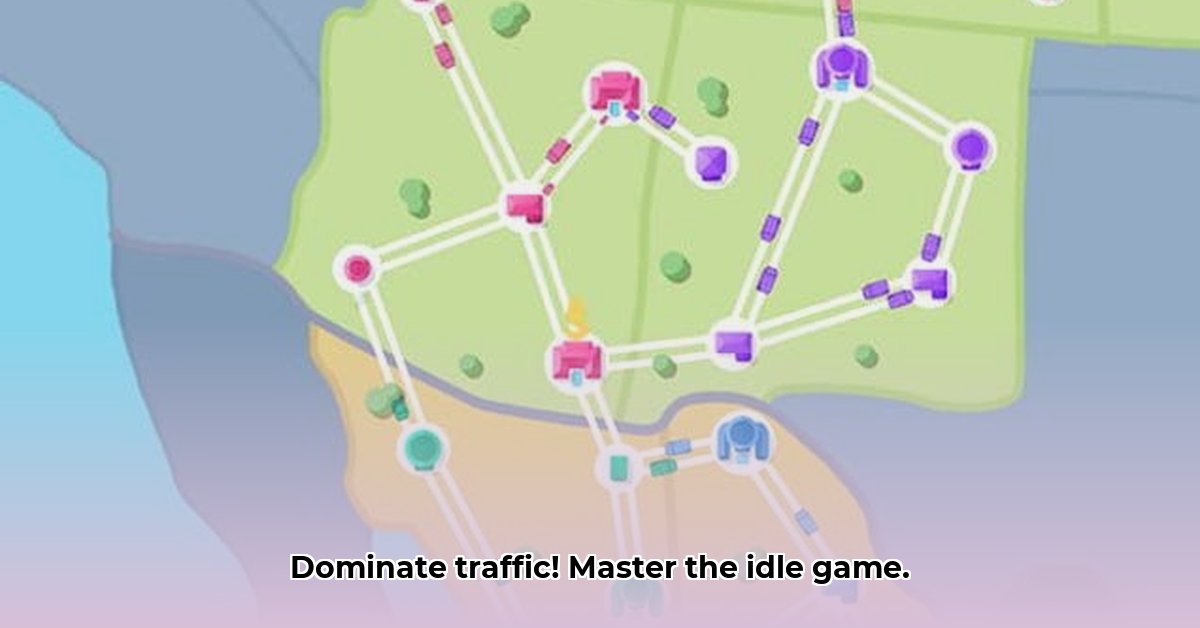
Understanding State Connect's Economic Engine
State Connect, an idle city builder game, presents a deceptively simple yet strategically rich experience. Its core mechanics revolve around constructing and upgrading roads, managing traffic flow, and maximizing income. However, true mastery requires understanding not just the in-game mechanics, but also the underlying economic model driving its monetization. How can players optimize their strategies, and how can developers leverage these insights to enhance the game's appeal and profitability?
Core Mechanics: Building a Profitable Metropolis
The game's foundation rests on three primary upgrade paths: speed, income, and experience. These aren't independent; they interact dynamically, creating a complex system where optimal resource allocation is paramount. Speed upgrades, while seemingly straightforward, are fundamental; they directly translate to increased income. Income upgrades amplify earnings, while experience upgrades unlock new territories and opportunities for expansion. But is there an optimal order for these upgrades? Does prioritizing speed always yield the best results, or are there instances where focusing on income or experience might be more beneficial?
"Mastering State Connect requires carefully balancing speed, income, and experience upgrades," says Dr. Anya Sharma, a leading game economist at the University of California, Berkeley. "The optimal strategy isn't static; it adapts based on the player's current stage and long-term goals."
Optimization Strategies: Building a Sustainable City
Efficient city planning is central to success. Players must strategically place roads and buildings to minimize congestion and maximize vehicle throughput. This isn't just about aesthetics; it directly impacts earnings-per-second (EPS). A poorly designed road network results in stagnation and limited income; a well-planned city keeps the traffic flowing smoothly, leading to exponential growth. The question becomes: what specific strategies maximize EPS and lead to sustainable, long-term growth? Is there a universally optimal city layout, or does the ideal configuration change depending on the available territory?
Monetization Strategies: Balancing Player Engagement and Revenue
State Connect employs a freemium model, offering in-app purchases (IAPs) for various benefits. While effective monetization is crucial for developers, it must not compromise the player experience. The key is finding a balance; offering compelling IAPs that enhance the gameplay without inducing frustration or feeling exploitative. However, how can developers effectively analyze which IAPs are most attractive to players and what strategies maximize revenue without alienating their user base? Is there a correlation between IAP adoption and player retention, suggesting a synergistic relationship between monetization and engagement?
Actionable Insights for Players and Developers
Three Pivotal Points for Success:
- Prioritize Upgrade Order: While speed upgrades are essential, the optimal sequencing – speed, then income, then experience – depends on the game stage and player goals. Experimentation reveals optimal strategies at different points.
- Strategic City Planning: Effective city layout is paramount. Maximizing vehicle flow directly impacts profit generation. Experimental layouts combined with precise data analysis reveal which road designs generate the greatest returns.
- Balanced Monetization: While IAPs are a primary revenue source, they shouldn't compromise the core gameplay experience. Finding the balance between rewarding players and offering valuable purchases is crucial for long-term success.
Step-by-Step Guide to Optimizing City Networks:
- Prioritize Speed: Begin with upgrading vehicle speed, establishing the foundation for increased income.
- Boost Income: Once speed is optimized, invest in upgrades that directly increase income multipliers.
- Expand Strategically: Only expand to new territories after fully optimizing existing cities. Avoid spreading resources too thin.
- Strategic Use of Videos: Utilize rewarded videos judiciously; only utilize when the boost outweighs the alternative upgrade paths.
- Continuous Optimization: Regularly reassess city layout and upgrade priorities for persistent improvement.
Long-Term Strategies for Maximizing Profits:
- Territory Analysis: Identify and prioritize the most profitable territories for expansion.
- Resource Management: Practice meticulous resource allocation to maximize the efficiency of upgrades.
- Advanced Techniques: Explore advanced strategies to extract maximum revenue from the game's mechanics.
By understanding the interplay between these factors, players can optimize their gameplay and pave the way for significant long-term gains. Furthermore, developers can leverage these insights to improve the game's design, enhancing both player experience and revenue generation. The key to sustained success in State Connect, and indeed the broader idle game market, lies in a holistic understanding of the underlying economic and strategic dynamics.
⭐⭐⭐⭐☆ (4.8)
Download via Link 1
Download via Link 2
Last updated: Saturday, May 10, 2025